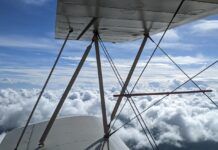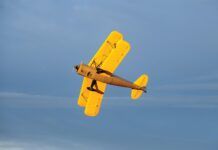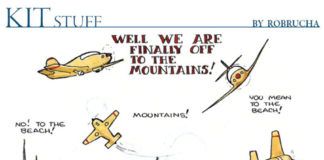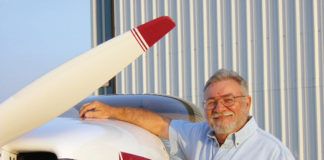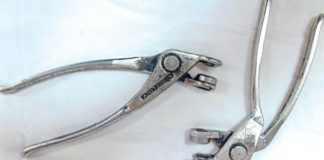The biplane configuration is older than powered flight. During the early years of aviation, the biplane dominated airplane design. It was not until the late 1920s that monoplanes began to become common, and it took WW-II to finalize the shift to the monoplane. Even today, the biplane persists in some specialized missions, such as aerobatics and crop dusting. The Pitts Special, the Ag-Cat and the Antonov AN-2 are all examples of biplanes that still exist simply because they perform their assigned missions so well.
There were good reasons why the biplane configuration was adopted by early airplane designers and why it lasted so long as the preferred configuration; it was a logical response to the problems faced by the designers of early airplanes. The reasons the biplane faded from the scene are equally valid.
Let’s consider some of the characteristics of the biplane.
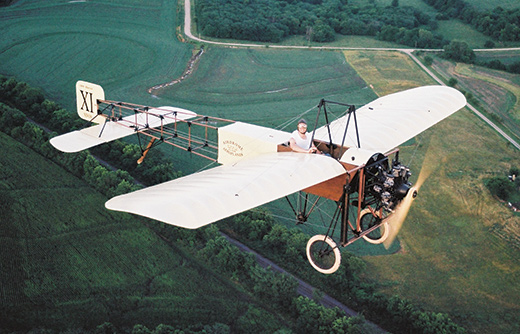
On some very early monoplanes such as the Bleriot (replica shown), the wing-generated nose-down moment, excessive aft CG and small tail led to undesirable airplane behavior.
Structure
The primary advantage of the biplane arrangement is structural. The two wings, combined with the interplane struts and bracing wires, form a single triangulated box girder. This box girder is both light and stiff.
For a given ultimate load, a properly designed set of biplane wings is significantly lighter than a monoplane having the same area and induced drag. This weight advantage generally is on the order of 25%—in other words, the biplane wings weigh about three-quarters of what the cantilever monoplane wing would weigh. If the biplane is designed carefully, and the wing geometry is chosen primarily to reduce weight rather than drag, the weight advantage of the biplane can be increased even further, until, according to some references, it can approach 50%.
Another structural advantage of biplanes is that a properly braced biplane is extremely stiff, both in bending and torsion.
Designers of early airplanes had little or no knowledge about flutter or proper aileron design. Early airplanes used very thin airfoils. Thicker airfoils, generally similar to those in current use, did not begin to appear until late in WW-I and did not become the standard until years later. The airfoils used on most airplanes up through WW-I were so thin that building a cantilever wing of reasonable weight using them, with the materials available at the time, was not possible.

Typical rib of a WW-I biplane, showing the thin, highly cambered airfoil.
Another characteristic of the early thin airfoils made the torsional rigidity of the biplane highly desirable. Most early airplane airfoils were highly cambered, primarily because the designers were trying to maximize lift. These thin, highly cambered airfoils generate a large nose-down (negative) pitching moment, which tends to twist the wing’s leading edge down more and more as airspeed increases and angle of attack decreases. The box girder formed by the biplane wings is rigid enough to resist this tendency to twist.
The Wright brothers and other very early airplane designers controlled roll by warping the wings. The biplane lent itself to this very well, because the wings themselves, being very thin, were very soft torsionally and thus easily twisted. They were held in shape by the bracing wires. By pulling or slacking off on selected wires, the pilot could change their length and force the entire wing assembly to twist for roll control.
The structure of a biplane is a truss structure, and hence it is relatively easy to design and analyze. This is not the case for many of the structural layouts used in cantilever monoplanes. Structural analysis in general, as opposed to design by eyeball and tradition, was pioneered by civil engineers. Truss structures are common in civil engineering. By the time people began to build airplanes, there was a relatively large body of knowledge available about truss structures, which had by then been used in bridge construction for many years. Cantilevered structures were rare in civil engineering and were poorly understood at the time. Early airplane wing structures, for both monoplanes and biplanes, were almost exclusively externally braced truss structures of some sort.
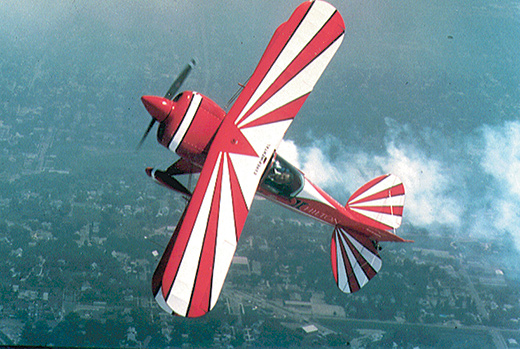
Biplanes remain popular for specific missions such as aerobatics.
Compactness
The biplane configuration lets the designer pack a lot of wing area into a relatively small configuration. There were several motivations for early airplane designers to keep the wing loading of their machines low. Airplanes had to operate out of small, unpaved fields and needed to take off and land at low speed. Flaps were not invented until after WW-I and did not become common until quite a bit later. This left the designers with low wing loading as the only method of keeping landing speeds down.
Early aero engines were both heavy for their power and unreliable. Both of these factors tend to put a premium on large wing area. First of all, more wing is needed to carry the extra (by modern standards) weight of the engine. Secondly, low wing loading improves rate of climb and makes it possible to fly on lower power. Finally, if one has to make a forced landing, it is nice to be able to land slowly to minimize damage to the airplane and the pilot.
For a given wing area, a biplane will typically have a shorter span than a monoplane, and its wings will be lighter. This combination is good for roll performance. The shorter span reduces the roll damping of the airplane, which improves sustained roll rate. The lower roll inertia caused by the combination of the shorter span and the lighter wings improves roll acceleration and instantaneous roll performance.
For fighter airplanes, both of these factors can be vital in gaining an advantage in air-combat maneuvering. Another factor that made the biplane’s inherently better roll performance desirable early on was the lack of knowledge about how to design effective ailerons. The ailerons of the time produced a lot of adverse yaw and relatively little roll-control power by modern standards. The rigidity of biplane wings also helped minimize wing twisting due to aileron loads. Even with the advantages that came from being biplanes, the roll performance of WW-I fighters was nothing like that of a modern aerobatic biplane like a Pitts.
When aircraft carriers first appeared, the short span of biplanes yielded another advantage. Carrier-based biplanes could be stored and parked aboard ship without folding their wings. When monoplanes became the norm for naval aircraft, folding wings came along immediately. The low approach speeds and ability to take off at low airspeed required for operations off of early non-catapult-equipped carriers were also a strong argument for biplanes and helped keep the biplane in favor with naval aviators for quite some time.
Pitching Moments and Trim
As we have already seen, the airfoils used in early airplanes were highly cambered and tended to generate large negative pitching moments. Airfoils with high negative pitching moments present a problem for the designer. The large negative moment generated by the wing must be trimmed out by a download on the tail. The bigger the wing gets, the worse this problem becomes, and the larger the tail must be to compensate. On some very early monoplanes, such as the Bleriot, the combination of the large nose-down moment generated by the wing, an excessively-aft CG (yes aft, because it induces instability) and a too-small tail led to situations where the airplanes would tuck under irrecoverably. If the nose was pushed down and the airplane placed at too low an angle of attack, the wing-induced moment would overpower the ability of the tail to produce down force to trim the airplane. Needless to say, this type of behavior did not inspire confidence in pilots.
The biplane offers a partial solution to this problem. The pitching moment generated by a wing (or set of wings) at a given airspeed is determined by three things: the airfoil, the wing area and the chord. A biplane splits its wing area between two wings. The chords of the two wings are shorter than the chord of a monoplane with the same span and area. In the simple case of a biplane having two identical wings, the chord of each of the biplane wings is half of the chord of the equivalent-area monoplane. Accordingly, with the same airfoil on both airplanes, the biplane will generate half of the pitching moment of the monoplane. As airfoil design improved and pitching moment was decreased, this became less of a concern, but for the early designers, it was a strong point in favor of the biplane.
A staggered biplane offers the designer another way to offset pitching moments induced by airfoil shape. By rigging some positive decalage into the wings, the upper (and forward) wing is loaded more than the lower (and rear) wing. This difference in the loading of the two wings produces a nose-up (positive) pitching moment, which helps unload the tail. In the limiting case, if we put in enough stagger, the wing system will become self-trimming and will, in fact, have mutated into a tandem-winged airplane.
Induced Drag
A biplane with a non-zero gap will produce less induced drag than a monoplane of equal weight and span flying at the same airspeed. The greater the gap, the lower the induced drag. In the limiting case of infinite gap, a biplane having equal-span wings will have half the induced drag of a monoplane of the same span and weight. As the gap decreases and the wings begin to interfere with each other, the induced drag increases. For the gap-to-span ratios typical of real-world biplanes, the induced drag advantage over the same-span monoplane is roughly of the order of 15-20%.
This induced drag reduction will not be very important at the high end of the speed range, but it can have large impact on the drag at climb airspeeds, where more than half of the drag of the airplane is induced drag. Since rate of climb is proportional to excess power, a 10% reduction in the drag of the airplane will produce a much more than 10% increase in rate of climb. For modern airplanes, this is not usually a major concern. For early airplanes, which had to haul themselves out of short fields, urged on by heavy, low-powered engines, it often made the difference between a successful takeoff and an unscheduled meeting with the trees.
The designers of early airplanes were faced with the need to create airframes that could fly out of short fields powered by heavy, unreliable engines. The state of aerodynamic knowledge at the time caused them to use thin, highly cambered airfoils, and the design missions of the airplanes did not require either high speed or long range. The aerial battles of WW-I occurred over a relatively stationary front in the trench-dominated ground war. Accordingly, the fighter designers of the time tended to prize maneuverability over speed. This design thinking was to persist into the 1930s. All of these factors made biplanes a good design solution for the missions at hand.
As we all know, the biplane was eventually supplanted by the cantilever monoplane as the primary airplane configuration. This happened as the state of knowledge and technology, as well as changing mission requirements, shifted the emphasis in airplane design. Technology advances reduced some of the disadvantages of the monoplane relative to the biplane, and changing mission requirements made the biplane’s disadvantages more damaging.






